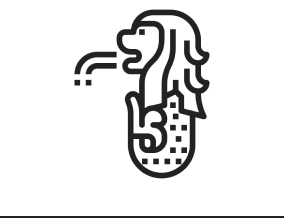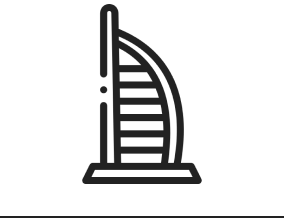Demand planning is a critical aspect of supply chain management that involves forecasting the demand for a product or service and creating a plan to meet that demand. The demand planning process helps businesses ensure they have enough inventory to fulfill customer orders while minimizing excess stock and reducing costs. In this article, we will explore the key components of the demand planning process and how it can benefit your business.
What Is Demand Planning?
Demand planning is the process of using historical data, market research, and statistical models to predict future demand for a product or service. It involves analyzing various factors such as seasonality, promotions, and economic trends to create an accurate demand forecast. Based on this forecast, businesses can develop a demand plan that outlines their production, procurement, and distribution strategies.
Key Components of the Demand Planning Process
The demand planning process typically consists of several stages:
- Data Collection: This stage involves gathering all relevant data related to past sales, marketing campaigns, competitive landscape, and macroeconomic indicators. Historical sales data is usually the most important source of information for demand planners as it provides insights into patterns and trends in consumer behavior.
- Demand Forecasting: Using advanced analytics tools like regression analysis, time series decomposition, and machine learning algorithms, demand forecasters generate statistical predictions about future demand levels. These forecasts are then adjusted based on qualitative inputs from subject matter experts (SMEs) who understand the specific nuances of the industry and the products being sold.
- Demand Plan Development: Once a reliable demand forecast has been established, demand planners work with cross-functional teams including Sales, Marketing, Operations, Finance, and Procurement to develop a comprehensive demand plan. This plan details expected volumes, timelines, and resource requirements needed to satisfy anticipated demand.
- Collaboration & Communication: Effective communication between departments within the organization ensures everyone understands the goals and objectives outlined in the demand plan. Regular meetings should be held to review progress against targets, identify potential issues early, and adjust plans accordingly.
- Performance Monitoring & Continuous Improvement: To evaluate the effectiveness of the demand planning process, performance metrics such as forecast accuracy, fill rate, and inventory turnover ratios must be monitored closely. Lessons learned from each planning cycle should be incorporated into subsequent iterations to improve overall efficiency and accuracy.
Benefits of Implementing a Robust Demand Planning Process
A well-executed demand planning process offers numerous benefits for organizations, including:
- Improved Customer Service Levels – By accurately anticipating customer needs, companies can maintain optimal inventory levels and reduce stockouts, leading to higher customer satisfaction rates.
- Reduced Costs – Efficient demand planning allows businesses to minimize wasteful spending on excessive inventory, lower carrying costs, and streamline operations by aligning resources with projected demands.
- Enhanced Supply Chain Visibility – Integrated demand planning systems provide real-time visibility into inventory positions, order statuses, and shipping schedules, enabling better collaboration among stakeholders throughout the entire supply chain.
- Increased Agility – Adopting agile demand planning practices enables organizations to respond quickly to changing market conditions and adapt their strategies accordingly, ensuring long-term competitiveness and growth.
Challenges in Demand Planning
Despite its many advantages, demand planning also presents some challenges, such as:
- Data Quality Issues – Poor quality data or insufficient data points can lead to inaccurate forecasts, making it essential to invest in robust data collection and cleansing processes.
- Lack of Cross-Functional Collaboration – Siloed departmental structures can hinder effective communication and collaboration, resulting in misaligned expectations and suboptimal outcomes.
- Managing Volatility – Unpredictable factors like natural disasters, geopolitical tensions, and sudden shifts in consumer preferences can make demand planning difficult, requiring flexible approaches and continuous monitoring.
- Data Collection: Gather historical sales data, market research findings, economic indicators, and other relevant information necessary for developing a robust demand forecast. Cleanse and validate collected data to ensure accuracy and reliability.
- Segmentation: Divide markets, customers, and products into meaningful segments based on criteria such as demographics, purchasing behaviors, and profit contributions. Analyze segment characteristics to inform tailored forecasting and planning efforts for each group.
- Demand History Analysis: Evaluate past demand patterns to detect trends, cycles, and seasonality inherent in historical data. Identify anomalies caused by external events like promotional activities, pricing changes, or competitors’ moves. Consider applying smoothing techniques, such as moving averages or exponential smoothing, to eliminate noise and highlight underlying tendencies.
- Statistical Model Selection: Choose appropriate forecasting methods based on the nature of available data and desired output granularity. Common options include simple linear regression, ARIMA (AutoRegressive Integrated Moving Average), Croston’s technique for intermittent demand, or more sophisticated machine learning algorithms. Perform model selection tests to determine which approach yields the highest forecast accuracy.
- Qualitative Inputs Integration: Solicit expert opinions from subject matter specialists familiar with local market conditions, new product launches, competitor strategies, or regulatory changes impacting demand. Blend qualitative judgments with quantitative forecast outputs to produce hybrid estimates balancing objective measurements with subjective insights.
- Consensus Building: Share preliminary forecasts with cross-functional teams responsible for executing downstream activities like production, procurement, logistics, and sales. Facilitate discussions among team members to reconcile divergent views, challenge assumptions, and arrive at a mutually agreed upon final forecast reflecting collective wisdom.
- Plan Generation: Translate approved demand forecasts into concrete plans detailing required inventory levels, manufacturing capacities, purchase orders, and distribution schedules. Optimize tradeoffs between conflicting priorities like cost reduction versus service enhancement.
- Execution Monitoring: Oversee implementation of generated plans to verify compliance with defined parameters and monitor deviations due to unexpected contingencies or execution lapses. Make mid-course corrections when necessary to keep projects on track.
- Feedback Loops: Capture lessons learned from executed plans and integrate them back into the next iteration of the demand planning cycle. Reflect on successes, failures, and improvements made along the way to strengthen the overall process continuity.
- Continuous Improvement: Periodically reassess the adequacy of existing demand planning frameworks in light of evolving business contexts, technological innovations, and shifting customer expectations. Implement incremental enhancements aimed at boosting forecast accuracy, shortening response times, and increasing collaborative engagement across functional boundaries.
Conclusion
Implementing a thorough demand planning process is essential for businesses aiming to optimize supply chain management, enhance operational efficiency, and achieve sustainable growth. By following demand planning best practices and investing strategically in technology, skilled personnel, and efficient processes, companies can overcome challenges and unlock significant benefits, including improved customer satisfaction, reduced costs, increased agility, and better supply chain visibility.






